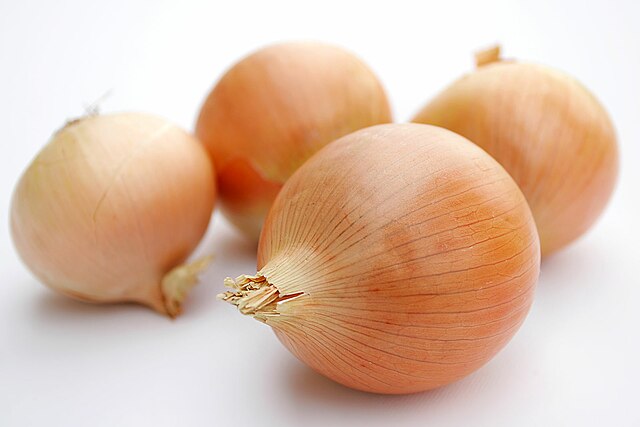Days after consumers in Pakistan paid thrice normal tomato rates, they are now reckoning with onion inflation that has doubled retail prices.
Tomato prices did however finally plummet from 600-700 rupees ($2.11-2.46) a kg to 200 rupees ($0.7), only for onions to take over.
Various provinces from Punjab to Sindh recorded bulb retail rate increases from 110 rupees ($0.39)/kg to 220 rupees ($0.77).
In a matter of days, wholesale onion prices also jumped from 3,000 rupees ($10.53) per 40 kg to nearly 6,500 rupees ($22.82).
Although supply and demand situations currently influence the volatility of both staples, with onions it is all about short-term shortage.
According to sources, kharif (autumn) supplies from Sindh province in southwest Pakistan have started slowly while Iran’s imports are down.
The just beginning Sindh season will have gained momentum by late November, and might tame prices by then.
How the 2025-26 national kharif crop unfolds remains uncertain, however, despite a bumper 2024-25 season when annual production surged by 16%.
In the meantime, traders in major commercial centers are converting short supply into lucrative rates. In Karachi, retailers had swelled pricing end October from the official retail price of 104 rupees ($0.37)/kg to 230 rupees ($0.81).
Before October 23, unit onion retail had averaged only 65 to 160 rupees ($0.23-0.56) a kg, per the Sensitive Price Index Data.
Inflation Rises and Falls
The same ascribes to tomatoes, which by October 30 had seen retail quotations surge monthly by 400%.
This led to a joke in parliament detailing how a single tomato in hand cost 75 rupees ($0.26).
The Afghani border through which much bilateral tomato trade passes has since October 11 suffered closure, contributing to shortages and steep valuation.
After Pakistan turned to Iran, however, supplies rallied beginning October 27, slashing rates to 200 rupees ($0.7) a kilo.
Iran filled in the gap with cheaper offers than those from the rain-hit Swat region within Pakistan.
The next outlook therefore remains how Pakistan will tame onion and tomato inflation by realigning vegetable prices at home. And domestic pricing of the two is the focus of the following statistics.
Pakistan Onion and Tomato Economics Statistics
Onions and tomatoes are some of the most accessible essential vegetables in Pakistan, but sometimes their prices escalate. Onions, for example, experienced a pricing surge from 65 rupees ($0.23) a kg to 200 rupees ($0.7) in late October 2025. Yet, the January 2020-April 2025 historical retail average was just 77.1 rupees ($0.27)/kg, according to the CEIC Data.
How high is onion consumption in Pakistan?
As of 2021, Pakistan boasted an onion consumption rate of 7.72 kg per person per year, according to the Helgi Library. The highest rate in the country’s history occurred in 2006 at 12.1 kg per capita.
What are some tomato economics in Pakistan?
Tomatoes, on the other hand, are an important food staple in Pakistan with consumption at 8 kg per person per year. For this reason, the government ensures the affordability of the commodity through retail pricing measures. In comparative terms, a kg of tomatoes in Karachi is apparently 1000% cheaper than in California, per Expatistan.
Despite official measures, market forces still determine prices across various cities in the country. According to the Agriculture Marketing Information Service (AMIS), wholesale rates as of October 30, 2025 were highest at Shakargarh at 16,000 rupees ($56.16) per 100 kg. The lowest were in MuzafarGhar at 8,700 ($30.54)/100 kg.
Does Pakistan have a maximum retail rate for tomatoes?
In order to protect consumers, Pakistan maintains a regular official retail cap for tomatoes. In October 2024, the cap was 104 rupees ($0.37) a kg while the year’s maximum had been at 322 rupees ($1.13).
